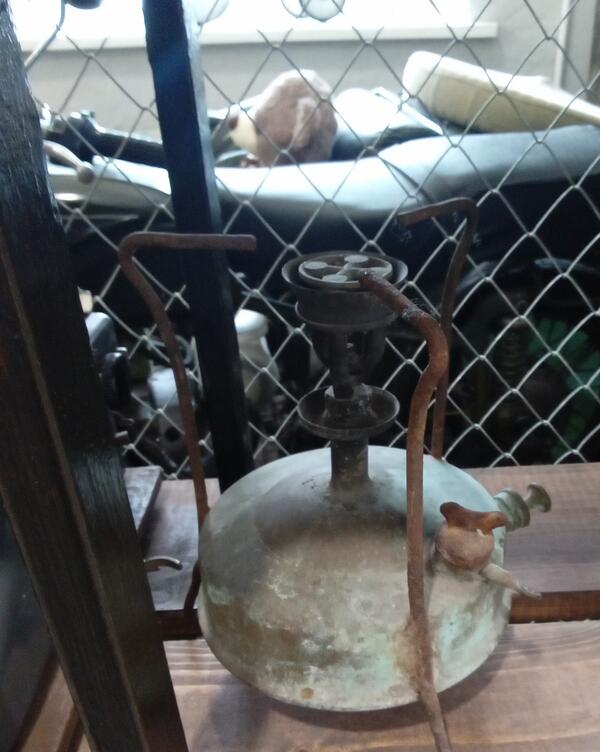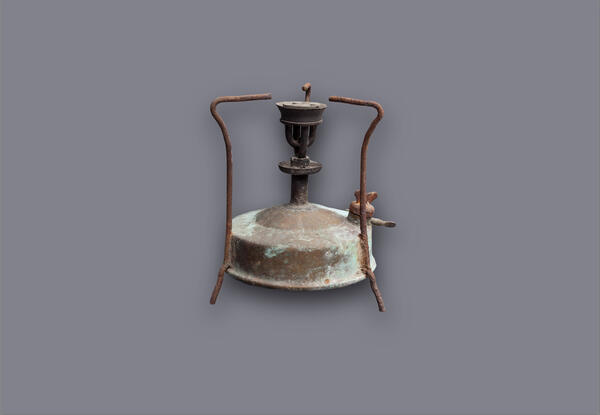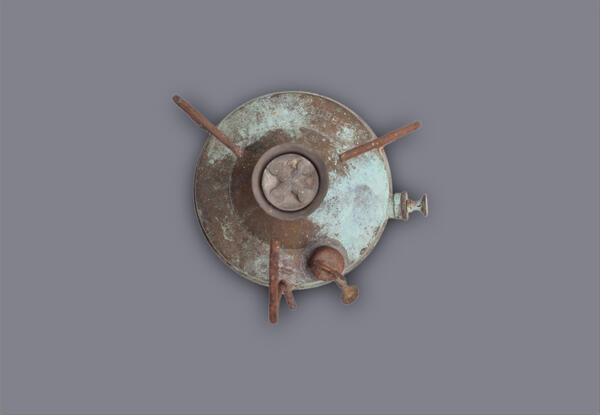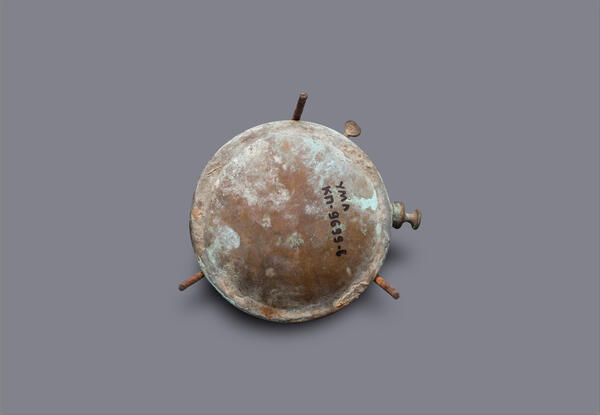A primus stove (commonly known as just “primus”) was a wickless heating device that ran on liquid fuel — gasoline or kerosene. It was invented in 1892 by the Swedish engineer Franz Wilhelm Lindqvist. Before opening his own company, he worked as a mechanic at the Separator company in Stockholm.
Over time, the invention made its way to Russia. The devices were produced, among others, by various machine-building factories. The primus on display in the museum collection was made at the Moscow-based Iskra factory.
In 1925 the Izvestiya newspaper published instructions for handling the device: “A primus is designed to be filled with kerosene, so never use gasoline, let alone a mixture of kerosene and gasoline. If the primus burner is clogged, it can explode, so keep burners clean and sweep them as often as you can.”
In the USSR, the primus stoves were widespread in the 1920s. This was due to the appearance of a large number of communal apartments and high-rise buildings that lacked both Russian stoves and English-type stoves. At times, one could see eight primus devices in operation in a kitchen in a Moscow or Leningrad communal apartment.
The device enabled to boil water and cook almost all food that required boiling or frying. Cooking on a primus stove could be quite a challenge, though: the fire of a primus was almost unregulated, intense and close to the bottom of the vessel being heated. Besides, it was forbidden to use the primus stove continuously for more than 90 minutes: it could explode.
As primus stoves were becoming common, new kind of cookbooks emerged, adapted to the appliance: “Cooking with an Ordinary Stove and with a Primus Stove”, “A Housewife’s Companion. 1000 Culinary Recipes with Instructions on How to Cook on a Primus Stove”.
Primus stoves were also used by Soviet campers: compact and lightweight, the devices could be easily transported on motorcycles. Soviet citizens continued to use primus stoves in their kitchens until the 1960s when they gradually began to be replaced by gas appliances. At the same time, the camping version of primus stoves finds its use even today; such models are still being produced. Nowadays, manufacturers recommend filling the burners with gasoline with an octane number not lower than A92.
Over time, the invention made its way to Russia. The devices were produced, among others, by various machine-building factories. The primus on display in the museum collection was made at the Moscow-based Iskra factory.
In 1925 the Izvestiya newspaper published instructions for handling the device: “A primus is designed to be filled with kerosene, so never use gasoline, let alone a mixture of kerosene and gasoline. If the primus burner is clogged, it can explode, so keep burners clean and sweep them as often as you can.”
In the USSR, the primus stoves were widespread in the 1920s. This was due to the appearance of a large number of communal apartments and high-rise buildings that lacked both Russian stoves and English-type stoves. At times, one could see eight primus devices in operation in a kitchen in a Moscow or Leningrad communal apartment.
The device enabled to boil water and cook almost all food that required boiling or frying. Cooking on a primus stove could be quite a challenge, though: the fire of a primus was almost unregulated, intense and close to the bottom of the vessel being heated. Besides, it was forbidden to use the primus stove continuously for more than 90 minutes: it could explode.
As primus stoves were becoming common, new kind of cookbooks emerged, adapted to the appliance: “Cooking with an Ordinary Stove and with a Primus Stove”, “A Housewife’s Companion. 1000 Culinary Recipes with Instructions on How to Cook on a Primus Stove”.
Primus stoves were also used by Soviet campers: compact and lightweight, the devices could be easily transported on motorcycles. Soviet citizens continued to use primus stoves in their kitchens until the 1960s when they gradually began to be replaced by gas appliances. At the same time, the camping version of primus stoves finds its use even today; such models are still being produced. Nowadays, manufacturers recommend filling the burners with gasoline with an octane number not lower than A92.





